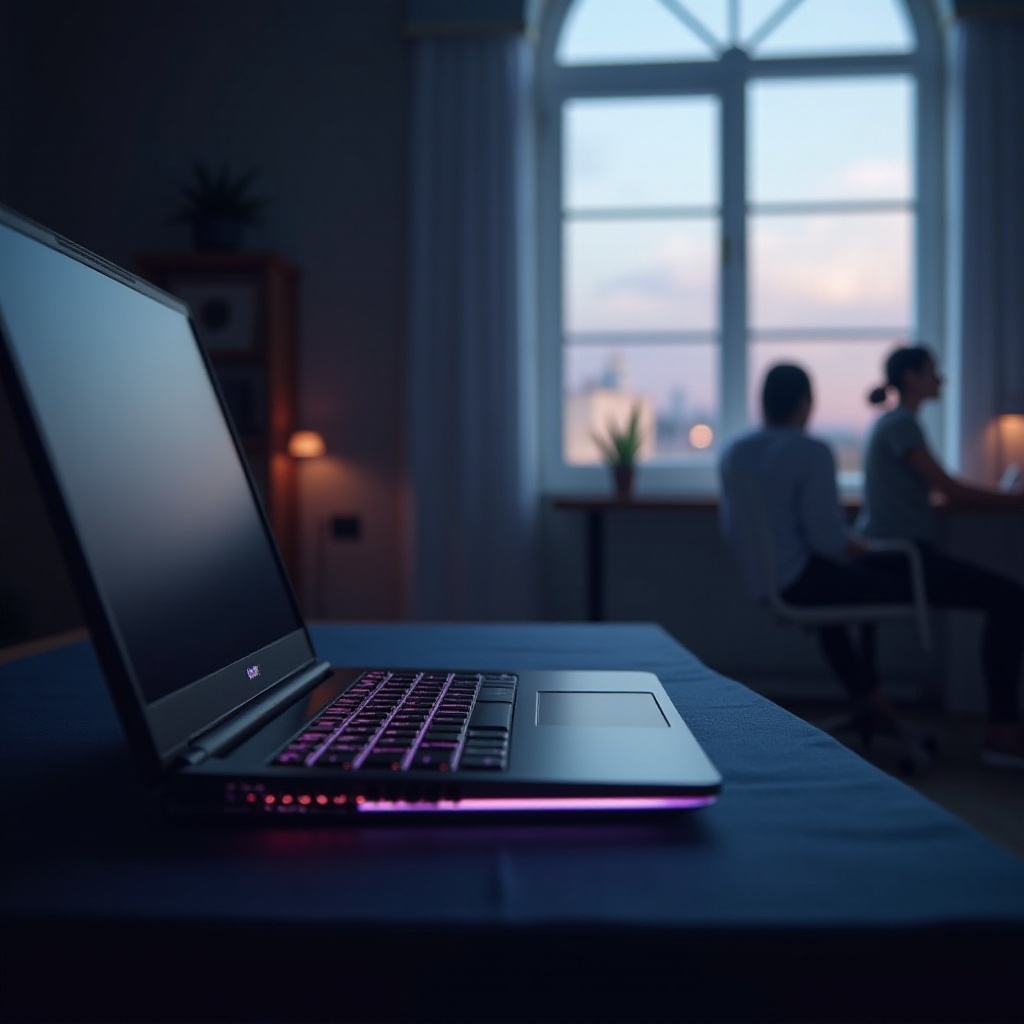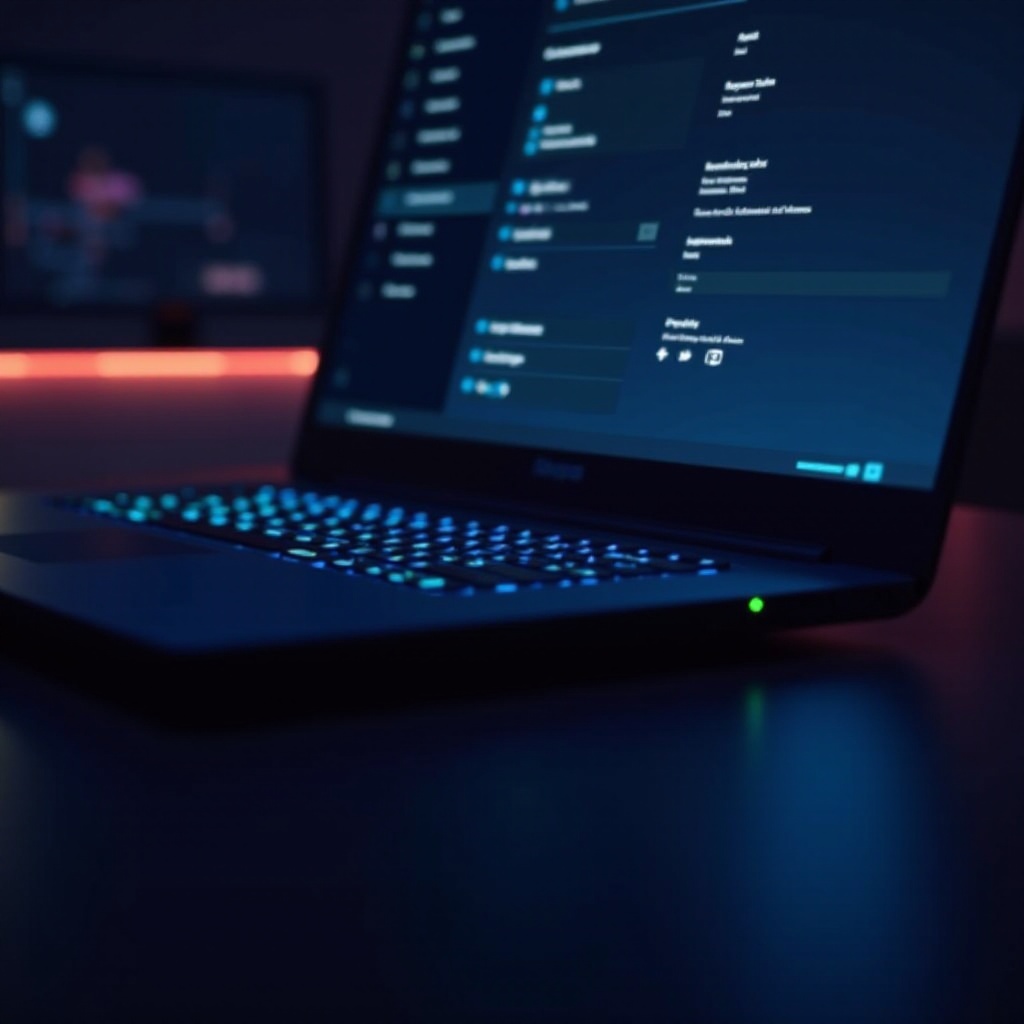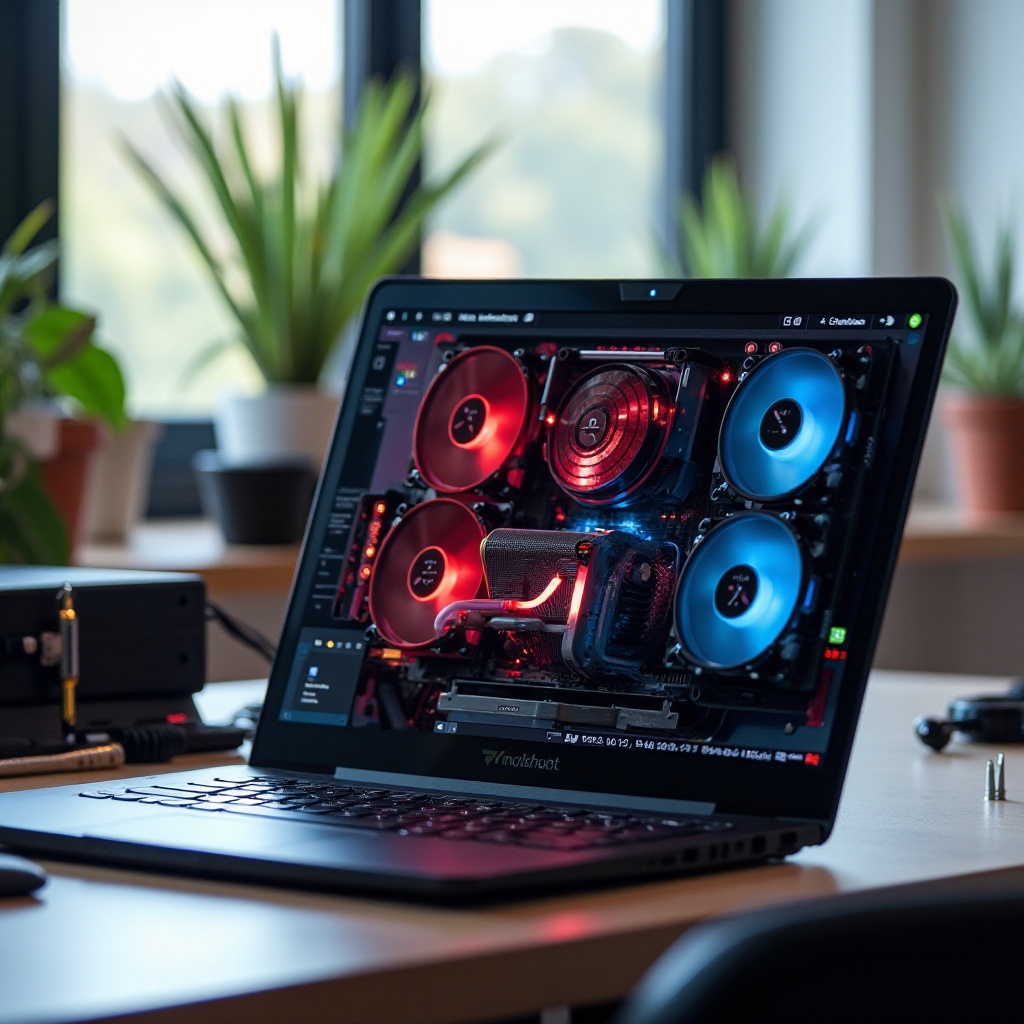Introduction
Laptop gaming offers thrilling experiences, but it also presents the challenge of managing heat production by robust hardware components. Overheating not only hampers performance but also risks hardware damage. Gamers need practical strategies to prevent laptops from getting too hot while ensuring optimal performance. This article guides you through methods to avert overheating, helping enthusiasts enjoy uninterrupted gaming sessions. By understanding the underlying reasons and implementing effective solutions, you can protect your investment and enhance your device’s longevity.

Understanding Laptop Gaming Overheating
Grasping why laptops overheat during gaming is crucial. Gaming laptops are built with high-performing components to handle intense graphics and processing tasks. However, this performance often comes at the cost of increased heat. If not properly managed, this heat can degrade performance and shorten your laptop’s lifespan. Heat typically dissipates through vents and fans, but when excess heat accumulates, it can lead to thermal throttling. This is when components slow down to prevent damage, ultimately affecting gaming.
Causes of Overheating in Gaming Laptops
High-Performance Hardware Demands
Gaming laptops come equipped with powerful CPUs and GPUs to support graphics-intensive games. These components generate significant heat as they operate at high capacities, pushing the system’s thermal limits. The more demanding the game, the hotter the hardware gets.
Insufficient Ventilation
Poor ventilation is another critical factor. Laptops compact powerful components into a small space, which can restrict airflow. Without adequate airflow, heat gets trapped inside, causing temperatures to rise quickly. Blocked vents further exacerbate the issue, as they prevent hot air from escaping.
Environmental Factors
External conditions, such as ambient temperature, can impact your laptop’s thermal performance. Using your laptop in warm environments or on soft surfaces like beds or couches can significantly restrict air circulation, resulting in higher operating temperatures.
Identifying Signs of Overheating
Recognizing the signs of overheating can help you take timely corrective actions. Common indications include:
- The laptop feels excessively hot to the touch, especially near the vents.
- Sudden shutdowns or restarts during gaming sessions.
- Performance drops, such as lag or stuttering video, as excess heat causes thermal throttling.
- Audible fans running at full speed, indicating the system is struggling to cool down.
Spotting these signs early allows you to implement measures to mitigate damage and improve gaming efficiency.
Effective Ways to Prevent Overheating
Regular Cleaning and Maintenance
Ensure your laptop’s internals are free of dust and debris, which can block airways and impede airflow. Regular cleaning of the keyboard, vents, and fan areas is essential. Use compressed air to blow out accumulated dust and make cleaning a routine task, ideally every few months.
Using Cooling Accessories
Invest in external cooling solutions like a laptop cooling pad. These devices provide additional ventilation and cooling capacity, reducing the temperature of both your laptop’s case and internal components. Opt for cooling pads designed with adjustable fan speeds for tailored experiences.
Optimizing In-Game Graphics Settings
Lowering your in-game graphics settings can help manage heat. High graphics settings increase CPU and GPU workload, leading to more heat production. By compromising slightly on visual quality, you can maintain performance without pushing your system beyond safe heat limits.
Software and Settings Adjustments
Monitoring Tools and Fan Speed Adjustment
Utilize software tools to monitor your laptop’s temperatures. Programs like HWMonitor or SpeedFan provide insights into internal temperatures and give you control over fan speeds. Adjusting fan speeds according to gaming intensity can help better manage heat levels.
Power Management Techniques
Revisiting your power settings can yield a cooler gaming experience. Switching from high-performance modes to balanced or power-saving modes reduces load and heat generated during gaming. Customizing settings in your operating system’s power management options can lead to significant thermal benefits.

Long-Term Hardware Solutions
Upgrading Thermal Paste and Components
For a lasting solution, consider hardware upgrades. Replacing old thermal paste with high-quality alternatives can improve heat transfer and cooling efficiency. Additionally, upgrading components like RAM or using solid-state drives, which typically run cooler compared to traditional options, pays off by enhancing the laptop’s thermal management and performance.

Conclusion
Preventing laptop gaming overheating is key to enjoying smooth gaming sessions and protecting your hardware. By combining regular maintenance with smart accessory use and optimizing software settings, you can effectively control overheating. Additionally, consider long-term hardware improvements for sustainable performance gains. Armed with these strategies, you’re well-prepared to keep your laptop cool and optimize its gaming capabilities.
Frequently Asked Questions
How can I tell if my laptop is overheating during gaming?
Signs include excessive heat, shutdowns, performance slowdowns, and noisy fans.
Are cooling pads effective for gaming laptops?
Yes, they enhance airflow, reducing laptop temperatures during heavy gaming.
Can overheating damage my laptop in the long run?
Chronic overheating can harm components, leading to reduced performance and life expectancy.